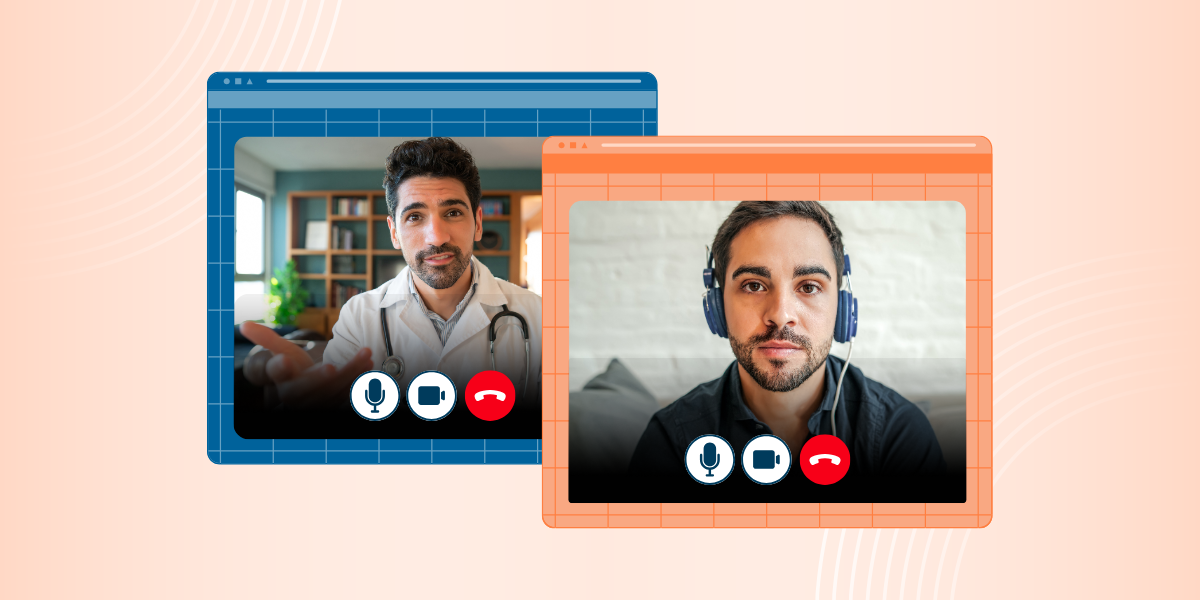The gap between experience and engagement raises an important question: If patients are happy with telehealth, why aren’t they using it more?
Despite years of progress and pandemic-fueled acceleration, many patients do not regularly use telehealth services. And yet, satisfaction rates with video visits, phone consults, and online scheduling are consistently high—often over 80%.
The gap between experience and engagement raises an important question: If patients are happy with telehealth, why aren’t they using it more? And more importantly for healthcare professionals, how can this gap be closed?
Below, we’ll explore the data surrounding telehealth usage and overall patient satisfaction. We’ll look at the barriers keeping adoption low and explore what providers can do to make virtual care a more visible and viable option for patients moving forward.
If Patients Like Telehealth, What’s Holding Them Back?
Despite impressive satisfaction rates — with 84% rating video visits excellent/good, 83% for phone, and 86% for online scheduling — the adoption of telehealth remains surprisingly low. 36% of patients report not using any telehealth services in the last year, indicating the core obstacle isn’t satisfaction; it’s awareness and access.
- Lack of Awareness
One of the persistent barriers to telehealth adoption is simple: many patients don’t realize it’s available to them. One survey found that nearly 40% of consumers believed their health system didn’t offer telehealth, and another 34.6% weren’t sure whether it was an option. That’s nearly three-quarters of patients who are uncertain about whether they can access virtual care through their current providers.
Even as telehealth became more common during the pandemic, awareness gaps persisted. The same survey found that 43% of patients didn’t know their provider offered telehealth services at all—a number that likely reflects not just a lack of communication, but a broader assumption that healthcare is still an in-person experience by default.
Unless practices consistently promote telehealth across multiple touchpoints, patients may not consider it, even when it’s a perfectly viable (and often better) option.
- Digital Literacy and Access Gaps
For many patients, especially those in underserved communities, accessing telehealth is about more than having the option — it’s about having the means. Roughly 15% of U.S. households don’t have a smartphone, and 10% lack access to the internet beyond cellular data, limiting their ability to participate in telehealth.
The challenge is also about digital fluency. Patients unfamiliar with online platforms or video conferencing tools may feel intimidated by the idea of a virtual visit. Those with cognitive impairments, disabilities, or language barriers may find telehealth platforms difficult to navigate.
Without targeted support, many of the patients who could benefit most from the convenience of telehealth remain cut off from it entirely.
- Technical and Operational Barriers
Even when awareness and basic access are in place, other technical hurdles can still get in the way. Things like poor internet connection, lack of universal access to telehealth-capable devices, privacy and security concerns, unclear reimbursement policies, and inadequate training are just some of the technical barriers both patients and providers are facing. These are not minor inconveniences — they’re significant blockers that can prevent otherwise willing patients from opting in.
Additionally, there’s the usability factor. Roughly 14% of patients rated telehealth technology as difficult to use, citing unclear instructions, clunky platforms, or trouble joining video calls. While a majority still had a positive experience overall, these challenges add friction, especially for first-time users. If a patient’s first experience is frustrating or confusing, they’re less likely to try again.
Closing the Adoption Gap: What Practices Can Do
To turn satisfied telehealth users into a larger patient base, there are a few things healthcare providers should do:
- Embed telehealth into every patient touchpoint: Practices with integrated electronic health record (EHR) systems are significantly more likely to offer telehealth, driving awareness and adoption. Embedding options like “Telehealth available” in portals, reminders, and check-ins can boost usage by up to 20% in primary care settings.
- Offer audio-only visits to improve equity: Audio-only telehealth remains essential, with one report stating that 56.5% of users aged 65+ prefer phone calls over video, largely due to a lack of devices or digital skills.
- Provide pre-visit tech support: A simple orientation call or email — offering access instructions, test-link reminders, or short video tutorials — can reduce failed connections and ensure a smoother user experience.
- Share satisfaction and efficiency data publicly: Analysis of 35 million telehealth visits across 33 specialties found most patients did not require in-person follow-up within 90 days, highlighting telehealth’s effectiveness and value.
- Stay updated on telehealth policy and billing changes: Federal flexibilities — like audio-only reimbursement and waived geographic restrictions — have been extended through September 30, 2025, ensuring financial viability for virtual care.
The Future of Telehealth is Still in Our Hands
Telehealth has come a long way, but it’s still underutilized. Not because patients are dissatisfied, but because many remain unaware of its availability or aren’t sure how to access it. The good news? Practices have the tools to change that narrative.
By making telehealth options more visible, offering flexible formats like audio-only visits, supporting patients through their first digital interactions, and sharing real-world success stories, providers can meet patients where they are digitally and emotionally.
That’s where RXNT comes in. RXNT’s integrated telehealth tools are built directly into its EHR and scheduling platforms, making it easier than ever to offer secure, compliant video visits with just a few clicks. From solo practices to growing groups, RXNT empowers practices to expand access, streamline operations, and meet patient expectations — without the tech headaches.
Ready to bridge the awareness gap and bring modern, convenient care to more patients? Schedule a demo of RXNT today.





